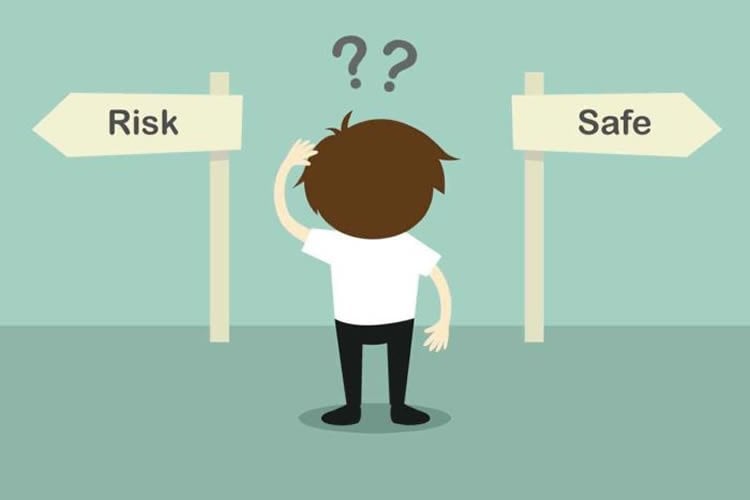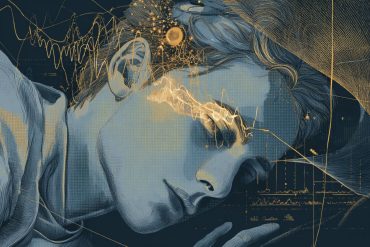Summary: Researchers have uncovered what goes on in our brains when we are faced with the decision to take a risk or play it safe.
Source: WUSTL.
Is a bird in the hand worth two in the bush?
New research sheds light on what’s going on inside our heads as we decide whether to take a risk or play it safe. Scientists at Washington University School of Medicine in St. Louis located a region of the brain involved in decisions made under conditions of uncertainty, and identified some of the cells involved in the decision-making process.
The work, published July 27 in The Journal of Neuroscience, could lead to treatments for psychological and psychiatric disorders that involve misjudging risk, such as problem gambling and anxiety disorders.
“We know from human imaging studies that certain parts of the brain are more or less active in risk-seeking people, but the neural circuits involved are largely unknown,” said Ilya Monosov, PhD, an assistant professor of neuroscience and senior author on the study. “We found a population of value-coding neurons that are specifically suppressed when animals make a risky choice.”
Value-coding neurons are cells whose activity reflects the value of a stimulus – in this study, the more juice that was offered to a monkey, the bigger the neurons’ response. However, shortly before the subject made a risky choice, these neurons became suppressed.
The researchers also found a separate group of neurons that signal information about uncertainty after the choice but before the risky outcome.
As they go about their everyday lives, people often must choose between a safe option and a better, but riskier, option. Do you stay in a secure job or quit to start your own business? Do you keep $2 in your pocket or use the money to buy a lottery ticket?
When the system of evaluating risk goes awry, it can have a severe impact on people’s lives. Maladaptive risky behaviors are a feature of compulsive gambling, bipolar disorder and attention deficit hyperactivity disorder. People with anxiety, on the other hand, err too far on the side of caution.
To study the neuronal circuits of risk taking, Monosov and colleagues gave rhesus monkeys – whose brains are structured very similarly to ours – a choice between a small amount of juice or a 50-50 chance of receiving either double that amount of juice or nothing at all. Over time, the amount of juice received under either condition would be the same, but one option was safe and the other risky.
It turns out rhesus monkeys like to live on the edge. The monkeys chose the risky option more often than the safe option. Moreover, the researchers found that a group of value-coding neurons in a part of the brain called the ventral pallidum were selectively suppressed when monkeys chose a risky option over a safe one. The ventral pallidum plays an important role in controlling levels of dopamine – a molecule that transmits signals between neurons and makes us feel good.

“The ventral pallidum inhibits dopamine neurons, and suppression of this area during risky behavior may increase dopamine release,” said Monosov, who is also an adjunct professor of biomedical engineering.
The results of the study may fit with observations showing an increase in risky behavior among people who take drugs that increase dopamine – such as methamphetamine users and Parkinson’s disease patients treated with L-dopa.
The study also found neurons in a nearby brain area called the medial basal forebrain became most active after the monkeys made a risky choice but before they learned the outcome of their choice – juice or no juice. That part of the brain provides inputs to a wide network of cortical brain regions involved in learning and memory.
“It makes sense that choosing an uncertain option is an important part of learning,” Monosov said. “When people are uncertain, they are driven to resolve the uncertainty. They approach the uncertain option, explore it, and learn from the outcome of their actions.” Modulating the medial basal forebrain by uncertainty could promote or influence learning. However, this remains to be tested.
Monosov now is studying whether temporarily turning off the ventral pallidum and the medial basal forebrain with targeted drug treatments affect the monkeys’ risk preferences and the strategies they use to learn.
“There are no anatomically targeted treatments for psychiatric disorders associated with misjudging risk, such as pathological gambling and anxiety,” Monosov said. “Now that we know where uncertainty is processed in the brain, we can start looking for ways to modulate it.”
Funding: This work was supported by the Edward Mallinckrodt Jr. Foundation and a NARSAD Young Investigator Grant from the Brain & Behavior Research Foundation.
Source: Tamara Bhandari – WUSTL
Image Source: This NeuroscienceNews.com image is adapted from the WUSTL press release.
Original Research: Abstract for “Multiple Mechanisms for Processing Reward Uncertainty in the Primate Basal Forebrain” by Noah M. Ledbetter, Charles D. Chen, and Ilya E. Monosov in Journal of Neuroscience. Published online July 27 2016 doi:10.1523/JNEUROSCI.1123-16.2016
[cbtabs][cbtab title=”MLA”]WUSTL. “Neural Circuits Involved in Making Risky Decisions Identified.” NeuroscienceNews. NeuroscienceNews, 27 July 2016.
<https://neurosciencenews.com/decision-making-neuroscience-4741/>.[/cbtab][cbtab title=”APA”]WUSTL. (2016, July 27). Neural Circuits Involved in Making Risky Decisions Identified. NeuroscienceNews. Retrieved July 27, 2016 from https://neurosciencenews.com/decision-making-neuroscience-4741/[/cbtab][cbtab title=”Chicago”]WUSTL. “Neural Circuits Involved in Making Risky Decisions Identified.” https://neurosciencenews.com/decision-making-neuroscience-4741/ (accessed July 27, 2016).[/cbtab][/cbtabs]
Abstract
Multiple Mechanisms for Processing Reward Uncertainty in the Primate Basal Forebrain
The ability to use information about the uncertainty of future outcomes is critical for adaptive behavior in an uncertain world. We show that the basal forebrain (BF) contains at least two distinct neural-coding strategies to support this capacity. The dorsal-lateral BF, including the ventral pallidum (VP), contains reward-sensitive neurons, some of which are selectively suppressed by uncertain-reward predictions (U−). In contrast, the medial BF (mBF) contains reward-sensitive neurons, some of which are selectively enhanced (U+) by uncertain-reward predictions. In a two-alternative choice-task, U− neurons were selectively suppressed while monkeys chose uncertain options over certain options. During the same choice-epoch, U+ neurons signaled the subjective reward value of the choice options. Additionally, after the choice was reported, U+ neurons signaled reward uncertainty until the choice outcome. We suggest that uncertainty-related suppression of VP may participate in the mediation of uncertainty-seeking actions, whereas uncertainty-related enhancement of the mBF may direct cognitive resources to monitor and learn from uncertain-outcomes.
SIGNIFICANCE STATEMENT To survive in an uncertain world, we must approach uncertainty and learn from it. Here we provide evidence for two mostly distinct mechanisms for processing uncertainty about rewards within different subregions of the primate basal forebrain (BF). We found that uncertainty suppressed the representation of certain (or safe) reward values by some neurons in the dorsal-lateral BF, in regions occupied by the ventral pallidum. This uncertainty-related suppression was evident as monkeys made risky choices. We also found that uncertainty-enhanced the activity of many medial BF neurons, most prominently after the monkeys’ choices were completed (as they awaited uncertain outcomes). Based on these findings, we propose that different subregions of the BF could support action and learning under uncertainty in distinct but complimentary manners.
“Multiple Mechanisms for Processing Reward Uncertainty in the Primate Basal Forebrain” by Noah M. Ledbetter, Charles D. Chen, and Ilya E. Monosov in Journal of Neuroscience. Published online July 27 2016 doi:10.1523/JNEUROSCI.1123-16.2016






